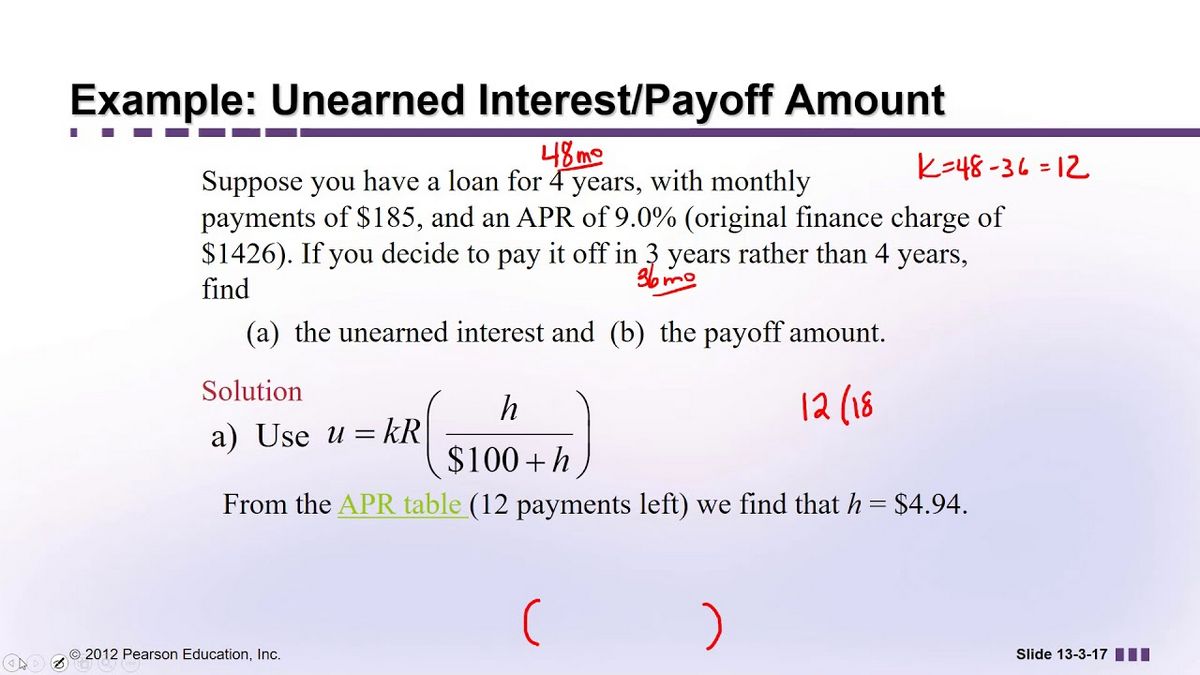Unearned Interest What it is How it Works Calculation

Contents
Unearned Interest: What it is, How it Works, Calculation
What Is Unearned Interest?
Unearned interest is interest collected on a loan by a lending institution but not recognized as income. It is initially recorded as a liability. If the loan is paid off early, the unearned interest must be returned to the borrower.
Unearned interest is also called unearned discount.
BREAKING DOWN Unearned Interest
Interest recorded in the books of financial institutions as a result of lending activities is earned or unearned. Earned interest is interest income earned over a specific period of time from investments that pay the lender a regular series of payments. Unearned interest, on the other hand, has been collected but not recognized as income. It is initially recorded as a liability.
Not all interest received by a lender is earned. Most lenders schedule loan payments to be made at the beginning of the month. The interest paid by borrowers at the beginning of the month applies to the borrowing cost for the entire month and has not been earned by the lender. For example, a borrower makes a $1,200 payment on the first of each month for a loan, of which $240 is the interest portion. Since the interest is prepaid, it is considered unearned by the lending institution. To recognize this transaction, the cash account is debited (increase in cash) and the unearned interest income account on the ledger is credited.
If the loan is paid off early, the unearned portion must be returned to the borrower. For example, if a borrower takes out a 36-month loan on a car and pays off the entire loan after 30 months, she will be refunded 6 months of unearned interest. This is the amount she will save by paying off the loan early.
Amortization of Unearned Interest
Unearned interest is an accounting method used by lending institutions for long-term, fixed-income securities. Initially recorded as a liability, it will eventually be recorded as income over the life of the loan. This process is referred to as amortizing unearned interest.
When amortizing unearned interest, a portion of the income is allocated to one period at a time. To amortize prepaid interest, the unearned interest income account is debited and the interest income account is credited.
Calculating Unearned Interest
Unearned interest can be estimated using the Rule of 78. This method is used to calculate the amount of the finance charge or interest to be rebated if the loan is repaid early. The formula for unearned interest is:
Unearned interest = F x [k(k + 1) / n(n + 1)]
where F = total finance charge, M = regular monthly loan payment, P = original loan amount, k = remaining number of loan payments after current payment, and n = original number of payments.
For example, if a borrower takes a $10,000 loan on a car to be repaid in 48 monthly installments of $310.00 and repays the loan after 36 months, the lender’s unearned interest can be calculated as:
F = (48 x $310) – $10,000
Unearned interest = $4,880 x [(12 x 13) / (48 x 49)]
Unearned interest = $4,880 x (156 / 2352)
Unearned interest = $4,880 x 0.0663
Unearned interest = $323.67
Unearned interest = $323.67



